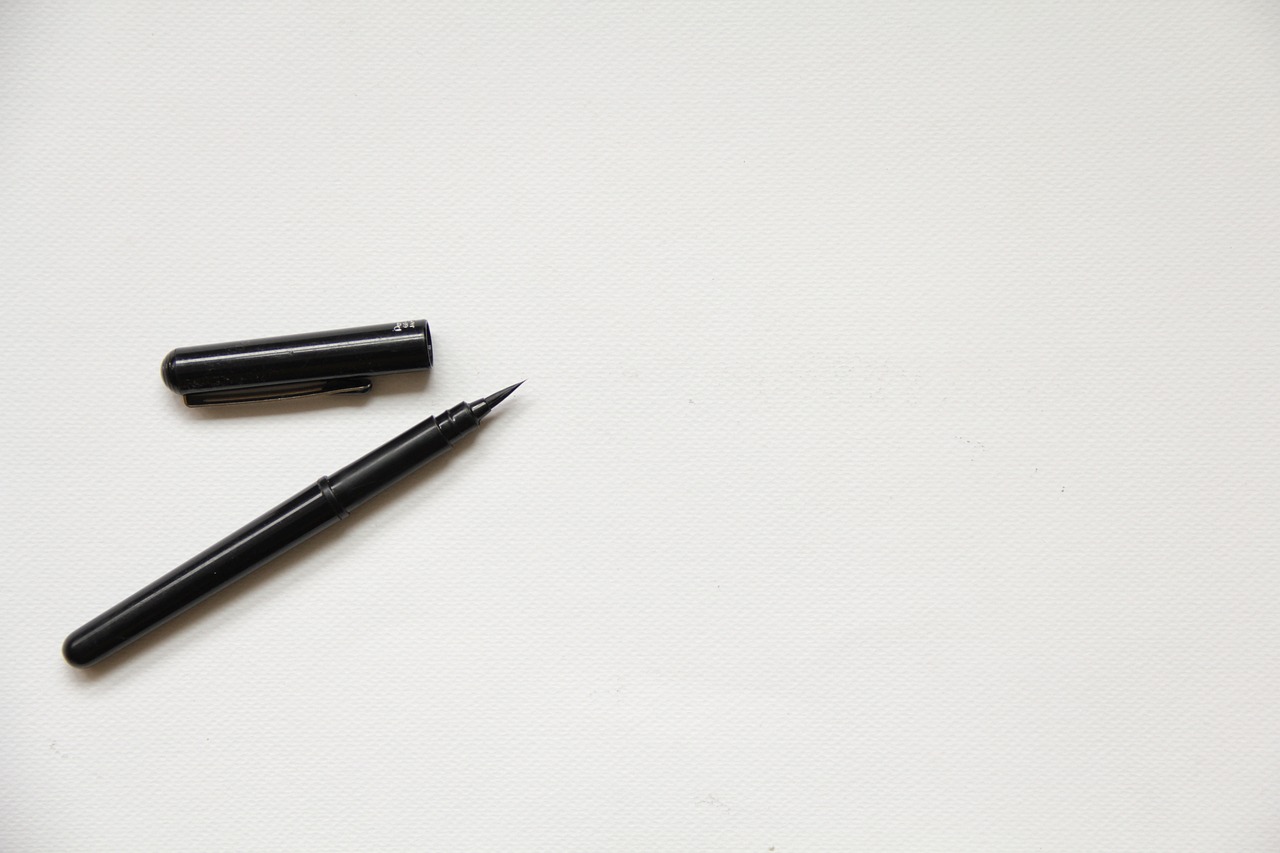One of the most rewarding experiences I had with my kids was practicing calligraphy together. The activity is good training for motoric skills, creativity, memory. And it is also not very expensive but very rewarding.
Disclaimer
I will be honest. It has very little to do with actual professional calligraphy. We do not care if the letters appear the same size, the font looks the same in every letter, or try to copy classical texts. We enjoy each other with pens, paper, and inks. We call this a calligraphy workshop.
To draw or to paint
There are several options here. All of them are good:
- Use the pens to doodle images.
- Try to imagine new fonts with specific embellishments and graphical elements.
- Write short improvised jokes.
- Try to recollect quotes and write them from memory. Compare with original for laughs.
- Perform the same activity with multiple pens.
- Write or draw geometric shapes with both hands
All of these activities are fun. All can be done with multiple levels of skill and difficulty.
Heterogenous activities
Something that I will require from myself is different from what I expect from a 14 years old son or 7 years old daughter. To be honest, quite often we do different things. I practice different fonts. My daughter draws. And my sons do their math homework.
So what do we kind of share? One big table and a collection of fine pens.
Pen addicts
The main reason to practice calligraphy to begin with is the joy of seeing beautiful pens lay gorgeous ink on the paper. Quite soon it is clear that while parker jotter is a workhorse, it is just no fun.
What are the options?
- A quill or an oblique holder die pen. This is not expensive, but messy. Lots of stuff and quite often the ink spills. Not something for kids, but an absolute joy for me. Dip pens are sort of unpredictable. The nibs are flexible, replaceable, and complex. Inks are whimsical. They could easily clutter any other pen. Fun!
- Expensive fountain pens. Usually, these pens have a piston mechanism. To be honest they get to the calligraphy sessions because they have special nibs and special inks. Flexible gold nibs, music nibs, ultra extra-fine nibs… With just one color per pen, pens need to be matched with inks…
- Cheaper fountain pens. Now, this is for the entire family. Any Lamy, Pilot, Platinum pen with steel nibs will work. Stub, bold, medium, and fine nibs. Tons of pens with tons of colors – one per pen. Cartridges or refills. These pens are also good for homework.
- Pencils. Especially 3mm lead holders. They allow multiple functions and multiple colors in one device. Perfect for kids coloring. Kind of a kid-friendly alternative to a dip pen.
To be honest, the kids usually play with cheap fountain pens. They practice holding the pen properly, doing homework, and drawing shapes. But why fountain pens and not ballpoint pens?
Fun vs mess tradeoff
Quills are messy and hard to work with. Proper penmanship takes several years to master using them.
Ballpoint pens are very comfortable and forgiving but extremely dull. There is no line variation. The inks are boring without shading.
Fountain pens are relatively easy to master, and yet… They allow changing the line width by applying pressure, studying italic and blackletter scripts, practicing proper pen holding angle.
The fun of fountain pens comes with a relatively uncomfortable price. Even worse, changing the color used with the pen is a small pain. It requires spilling the ink back to the bottle, cleaning the pen itself with a syringe, rinsing and refilling the converter or the piston. Doable but not all the time…
Pencils can be expressive, and they can take different refills. Provide you enjoy the colors you draw with. For me, pencils are somewhat not as shiny as quality inks.
Better balls
To be honest, there are variations of ballpoint pens. Gel pens provide softer touch. Rollerball pens allow yet more liquid inks. Needlepoint pens are easier to use with a ruler.
Even a dull parker jotter can take a huge variety of G2 refills. Using non-original quality refills provides a very wide range of experiences. Fisher can work in any height or humidity. Shmidt EasyFlow 9000 is vibrant and versatile. Parker Quinkflow is a hybrid quick-drying oil-based formula. Itoya quick-dry gel is a water-based needlepoint refill.
And then you can get almost any color if you use for example Monteverder refills with a ceramic ball. If you have any experience with ceramic bearings, you will appreciate the value of the ceramic ball over a regular steel ball.
Additionally, replacing the refill in a ballpoint pen is an issue of 30 seconds or less. Easy!
Font variations
There are three kinds of fonts I enjoy practicing with both hands.
First, there is a cursive font which I try to write using the smallest letters I can master of A6 dotted paper. It is perfect for annotations to books, notes when working on a computer, small post-it notes. The fine nibs required here can work with any paper.
Italic fonts. Not always with an italic nib. Pilot FA nib works just fine. To be honest even medium nibs do decent work. Italic letters are fine for medium-sized text, like things I want to review many times. Alternatively, I can use it for a greeting card or for my signature. The medium letter size is also nice for faster writing. Usually, more ink is spilled here, and the quality of paper starts to matter.
Blackletter, like title scripts. Perfect for Pilot Parallel pens, but can also be done with most stub pens. Very clean fat lines stand out. Best done with good paper (Rhodia or Tomoe River). And it can also be done with some felt-tip pens with stub (not round) tips (whiteboard markers).
Most of my actual writing is neither of those. I use the simple cursive script I learned in school as a child. Usually, I simply use a ballpoint pen. It is effective, but not as fun as the practice fonts.
Manga nibs
For doodling, nothing beats a titanium Zebra G nib for a dip pen. It is also a great italic font nib. There are two issues here. First: the nib works almost only with dip pens. And this immediately means: messy. Second issue: the wonderful flexibility of the nib is pretty hard to control. It is not for the kids…
There are alternative less flexible dip pen nibs, like for example glass dip pens… Or we can doodle not with a dip pen. The results will probably be less expressive, as the control of the pressure on the nib is less visible. So what?
There are many great artists that do complex works with fountain pens. Especially in the styles that use very fine lines.
And for shading, pencils perform quite well. So why not use it?
What does a calligraphy session look like?
We do not practice proper calligraphy as a family. We have fun.
Since we basically need 3-4 kinds of a pen, each of us takes 4 pens. Usually, I take a dip pen, and the kids take other kinds of pens.
Next, we take 10 min to watch some sort of instruction and think about what we want to do. This is time to consult and brainstorm.
For around 20 min we draw or write what we fancy. Nobody talks.
Now 10 more minutes to discuss the results, the mistakes and the progress, get ideas for the future progress etc.
And 5 min to prepare for the next task.
Switch pens and repeat as many times as you want. Usually two or three cycles per day. Not every day…
The creative part
Doing the exercise in a family we can fool around. For example, we can create and draw or write down jokes that only family members can understand. The focus here is on improvisation. The message needs to be amusing.
It is OK to create something “deep” instead, for example choosing and copying motivational quotes. The improvisation element here is in choosing the quotes that generate some sort of a story, like a dialogue between authors.
Also, we use three languages interchangeably. English, Hebrew, and Russian. This is wrong for the calligraphy process but great for associations.
The memorization counterpart
Alternatively, we memorize quotes and write them from memory. Then the focus is on accuracy. Either quote accurately or make amusing mistakes…
The focus here is not on creative fonts, but on very repeatable font and very repeatable quotes. This can be effective only with a couple of fonts and two hundred quotes. Extending beyond the basic scope benefits from the extensive dedicated practice. Like, you do not memorize 1000 digits of pi unless you really have to.
Bible studies
This whole chapter of our lives started from bar-mitsva studies of my son and a simple question: how do these guys (סופרי סת”ם) write entire passages from the bible using techniques that are 2000 years old? I challenge you to check that for yourself…

